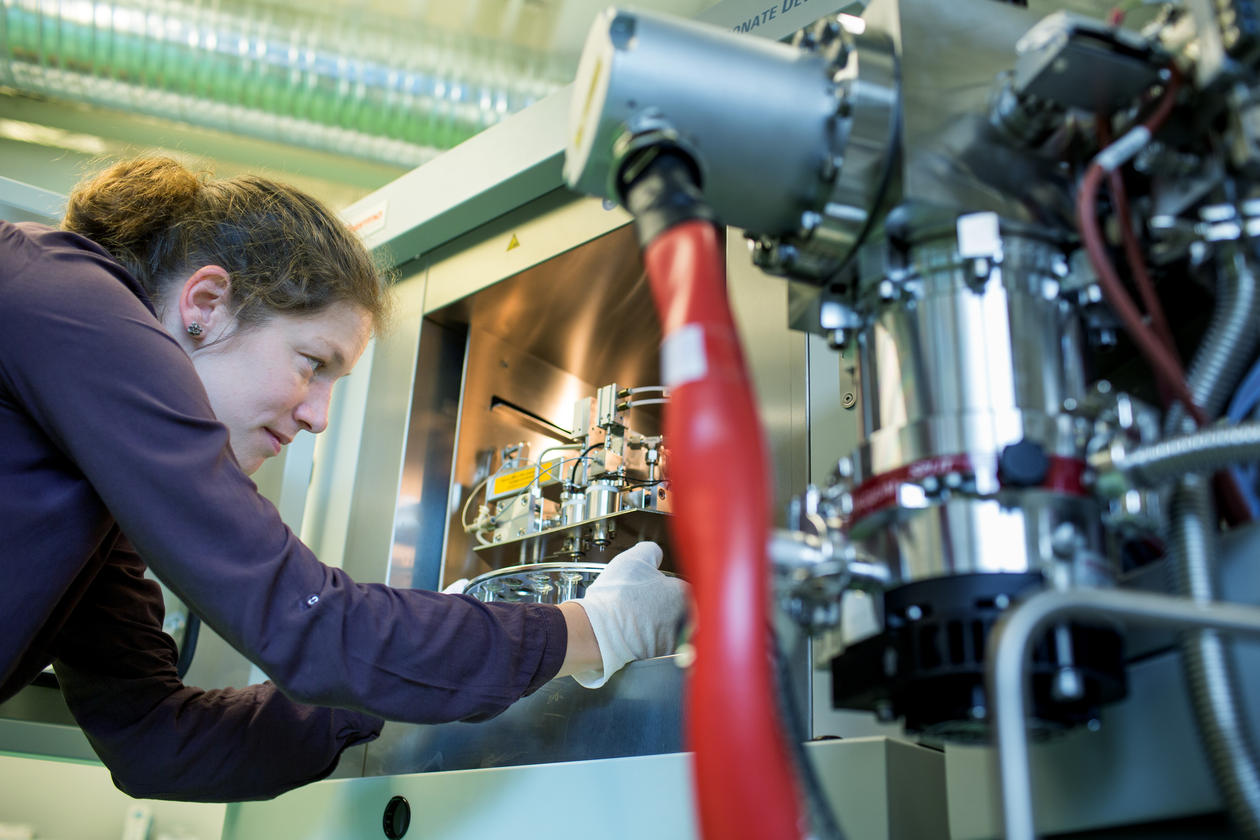Clumped isotopes in carbonates and CO2
Main content
Sample material: Carbonates or CO2
Precision: Typical external precision on 𝛥47 for 80-100 µg carbonates is 0.03 ‰ (1 SD)
Instrument: Thermo Scientific MAT 253Plus with Kiel IV carbonate preparation device
Sample requirements: Samples need to be free of organics and halogens. Foraminifera samples are cleaned with DI water and methanol under sonication.
Routines: Typically, 15-40 replicates (depending on desired precision) are measured per sample, distributed over longer measurement periods.
Clumped isotopes in carbonates and CO2 are measured using dedicated Thermo Scientific MAT253Plus isotope ratio mass spectrometers coupled to Kiel IV carbonate preparation devices. This instrumentation allows us to minimize sample size requirements for carbonate samples.
For carbonates, small (~ 100 µg) aliquots are weighed into individual Kiel vials. The samples are automatically reacted with phosphoric acid and the resulting CO2 is purified for water with a cold trap, as well as organic contaminants using an in-line Porapak trap. Each run takes approximately one day and contains around 20 sample aliquots and an equal number of clumped isotope carbonate standards (ETH 1-4). Masses 44-49 are measured in microvolume mode, and results are corrected for pressure baseline effects. The data are transferred into the absolute reference frame using three of the carbonate standards, with the fourth being used as control. For a reliable clumped isotope (𝛥47) value, results from several (10-40) aliquots need to be averaged. The number of replicates depends on the desired precision. Besides 𝛥47, the analyses yield 𝛿13C and 𝛿18O for each aliquot. All data processing is performed using the Easotope software (https://easotope.org).
Pre-processing of carbonate samples depends on the sample type. For example, speleothem calcite can typically be weighed in directly. Foraminifera require gentle ultrasonic cleaning with deionized water and methanol, with the number of cleaning steps depending on the sample. Organic-rich samples need to be cleaned with an oxidative treatment prior to analysis and need to be free of halogens.
Larger carbonate samples or those requiring higher reaction temperatures or additional cleaning can be reacted offline in glass vessels and processed on the glass vacuum line.
Clumped isotopes in CO2 are measured by transferring the sample directly into the sample bellow of the dual inlet. The CO2 is purified on the vacuum line for water and organic contaminants prior to analysis.
